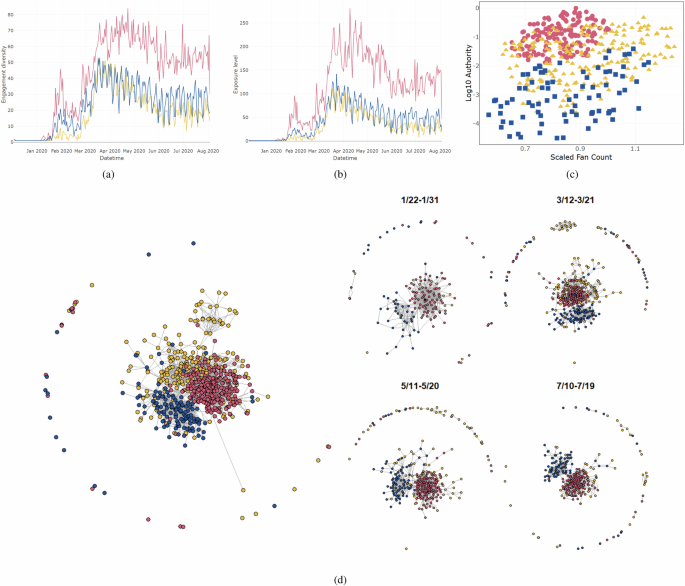Listen to the article
Facebook Study Reveals Patterns in COVID Vaccine Debate Online
A new study examining Facebook’s role in COVID-19 vaccine discussions has uncovered complex patterns in how online communities formed around vaccine attitudes during the pandemic’s early stages.
Researchers analyzed a network of 1,356 interconnected Facebook pages that were originally developed around vaccine discussions before the pandemic. Using data from December 2019 through August 2020, they tracked how these pages responded to COVID-19 vaccine information.
The Facebook network included three distinct types of pages: 211 pro-vaccine pages with 13 million followers, 501 anti-vaccine pages with 7.5 million followers, and 644 neutral pages with 66.2 million followers. These neutral pages typically focused on topics like parenting, pets, alternative health, and lifestyle interests.
“We observed that pro-vaccine and anti-vaccine pages maintained extremely consistent stances over time, while neutral pages exhibited more variable attitudes,” explained one of the study’s researchers. “These connections between pages became critical information conduits during the pandemic.”
The study found that information flow between pages changed significantly as the pandemic progressed. By March 2020, researchers noted rapid increases in both pro-vaccine and anti-vaccine content, indicating growing polarization across the network.
Perhaps most notably, anti-vaccination pages demonstrated particularly high “network authority” scores – a measure developed specifically for analyzing directed networks like Facebook’s page structure. This metric identifies pages that function as influential authorities on a topic based on their position within the broader network.
“Anti-vaccination pages formed tight informational clusters, which likely reinforced their extreme attitudes,” noted the research team. “Pro-vaccination pages showed similar clustering patterns, while neutral pages maintained considerably less dense informational connections among themselves.”
To better understand these dynamics, researchers developed an agent-based model simulating how attitudes spread through such networks. Their model incorporated several key factors observed in the real-world data: the influence of pages with extreme views, tolerance thresholds for opposing opinions, varying levels of influence among different pages, and the evolution of network connections over time.
The model identified three primary patterns that emerged in the network: neutrality (where most pages maintained moderate viewpoints), consensus (where most pages aligned with either pro- or anti-vaccine positions), and polarization (where pages divided into opposing camps).
“What’s particularly interesting is how the tolerance for dissimilar attitudes affected network formation,” a researcher commented. “As agents became more accepting of connecting with pages holding different views, we observed a transition from neutrality to partial polarization to more complete polarization, and finally to consensus.”
The study also revealed that even small amounts of random opinion change substantially increased the probability of polarization, especially when propaganda from both extremes was strong. This suggests that external factors – like news events or personal experiences – played an important role in shaping online vaccine discourse.
The findings highlight how social media networks can facilitate the formation of echo chambers around contentious health topics. Understanding these mechanisms could help public health officials develop more effective communication strategies during future health crises.
“The COVID-19 vaccine debate didn’t occur in a social vacuum,” the researchers emphasized. “The interplay between network structure, pre-existing attitudes, and external events created complex patterns of information flow that ultimately shaped public perception.”
This research provides valuable insights for policymakers and health communicators seeking to understand how online discussions influence public health attitudes and behaviors during global health emergencies.
Verify This Yourself
Use these professional tools to fact-check and investigate claims independently
Reverse Image Search
Check if this image has been used elsewhere or in different contexts
Ask Our AI About This Claim
Get instant answers with web-powered AI analysis
Related Fact-Checks
See what other fact-checkers have said about similar claims
Want More Verification Tools?
Access our full suite of professional disinformation monitoring and investigation tools




10 Comments
The findings on the consistency of pro- and anti-vaccine pages versus the variability of neutral pages raise some concerning questions about potential echo chamber effects and the challenges of maintaining balanced perspectives.
This is a timely and important piece of research, given the pivotal role of social media in shaping public discourse around COVID-19. Understanding the mechanics of how these information networks function is crucial.
I’m curious to see if the researchers have any insights on how to foster more constructive dialogue between the different ideological camps on this issue.
While the researchers’ findings are thought-provoking, I would be curious to know more about their methodological approach and any potential limitations or biases in their data or analysis.
The study’s insights into the role of ‘neutral’ pages in the vaccine information ecosystem are particularly intriguing. It suggests the need for a more nuanced understanding of how different types of online communities interact and influence each other.
Agreed, the neutral pages’ apparent variability in attitudes could be an important factor in how information spreads and perceptions are shaped.
Fascinating study on the complex dynamics of vaccine-related information networks on social media. It highlights the challenge of maintaining objectivity and nuance on contentious public health issues.
Agreed, the findings about the consistent stances of pro- and anti-vaccine pages versus the variability of neutral pages are quite intriguing.
This study underscores the need for greater media literacy and critical thinking skills, so that people can better navigate the complex information landscape around contentious topics like vaccines.
Absolutely, equipping the public with the tools to identify and evaluate different sources of information is key to combating the spread of misinformation.